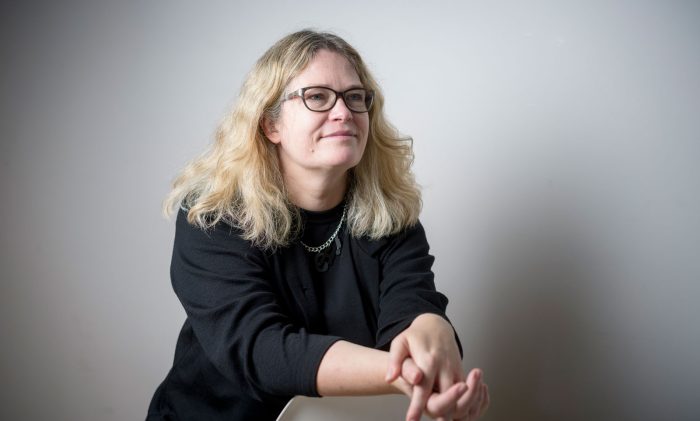Six Ways to be Sustainable in Exhibition Design with Nissen Richards Studio
As a practice, we are thoughtful and imaginative, and take great pride in our work being of the highest quality. Collaboration, listening and dialogue are central to our working methodology, and as a curator of multiple creative fields, we are able to offer new design perspectives. The climate crisis is at the forefront of our design approach, pushing our practice to deliver sustainable exhibition design.

Pippa Nissen, Director at Nissen Richards Studio
Here’s our approach:
1 Layers of build – from permanent to temporary
Increasingly, we’re starting to break down our designs into timeframes, looking at where can we invest in really beautiful, hardwearing materials that last decades, and where can we use temporary materials that can be changed easily, but which look permanent and good. With recent innovations in graphic printing, there are incredible and great-looking low-tech materials available, such as magnetic surfaces and clear vinyls, which can be placed on something heavy and permanent and be updated cheaply and quickly. It’s worth thinking too about what might change in the future and embrace that by not being too precious about the overall concept. If 60% stays for the long-term, perhaps 30% might change in 5 years’ time and 10% in 2 years’ time, then we should try and install infrastructure that makes this last 40% only a fraction of the budget, so the client can make minimal changes for maximum effect without breaking the bank.
2 Using eco-friendly materials – let’s get rid of plastic
There are so many wonderful new materials out there that are the opposite of plastic, in terms of being full of life and character. We used to be asked for utterly robust surfaces that could be used forever. Now we need to think about surfaces that perhaps have a patina and can change through use. A bit like in architecture – for example the interior spaces of the Thermal Baths at Vals, where a copper door picks up fingerprints and thereby becomes a new texture – we should choose materials with their own lifespan that live and breathe, like people. They might begin with a texture, but, if you scratch it, you see another surface – and if you touch it, you celebrate the way it has worn.
3 Design for more than one show at a time – less bespoke, more flexible
Lots of our current work involves re-configurating parts for multiple shows. We’re designing new pieces that can be put together in different ways, re-using wherever possible and designing smaller infill elements with high impact. Sometimes this feels like a giant game of chess, moving bits around and creating new shapes and juxtapositions, alongside little pieces that sit between, on top or around. The details – the things you really notice as a visitor – shift and change, which feels much less wasteful. The overall size of spaces remains reasonably constant, whilst the stuff you touch, feel and see at eye level changes and adapts, incorporating some really beautiful bespoke details.
4 Making the most of light and AV – the power to transform
Using light and AV to create dynamic surfaces is a really sustainable way to think about spaces that might otherwise remain unchanged. Although light and AV obviously use power and electricity, at the same time they allow us to think really creatively about transformation. If we create layers with texture and character, lighting can pick up on and exaggerate these, whilst dynamic lighting can shift slowly through spaces during a show or for different events. This is more like a theatrical environment, where power is concealed and can move around structures in hidden channels and conduits, grazing or washing light over surfaces. Using AV on different materials also feels exciting. We recently created a plywood infill room and projected a historic archive film directly onto the ply, which felt really contemporary and gave everything coherence, even though the original historic files were of quite low quality.
5 Craft and human imperfections – celebrate hand-made ‘errors’!
The main shift in all of these options is one of expectation in terms of imperfect spaces, using complex and changing surfaces, as well as the feeling of craft – either using local artists or materials where you can see that the hand of the maker, demonstrating integrity and the fact that it has been made. Once clients accept this, it will enable big change. We created one exhibition out of paper, for example, where the paper looked beautiful and then adapted naturally and changed according to temperature fluctuations. Giant sheets of paper puckered – but it was wonderfully real. At the end, all the paper could be recycled with the contractor’s take-down also wonderfully simple!
6 Finally – build to last
The most important shift – and one which again needs some financial commitment from our clients – is to build for 150 years, using materials that can last, but which will fundamentally do the job for three generations. High quality materials with a lifespan and inherent robustness can form a structural base, with newness introduced through graphic surfaces, crafted textures, and light.
By Pippa Nissen, Director at Nissen Richards Studio




